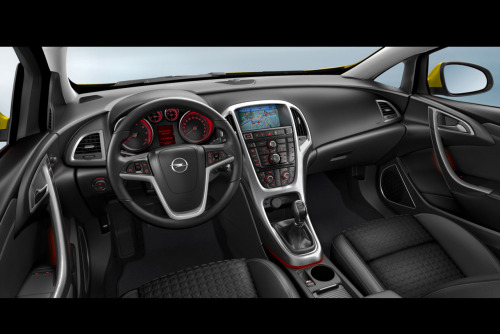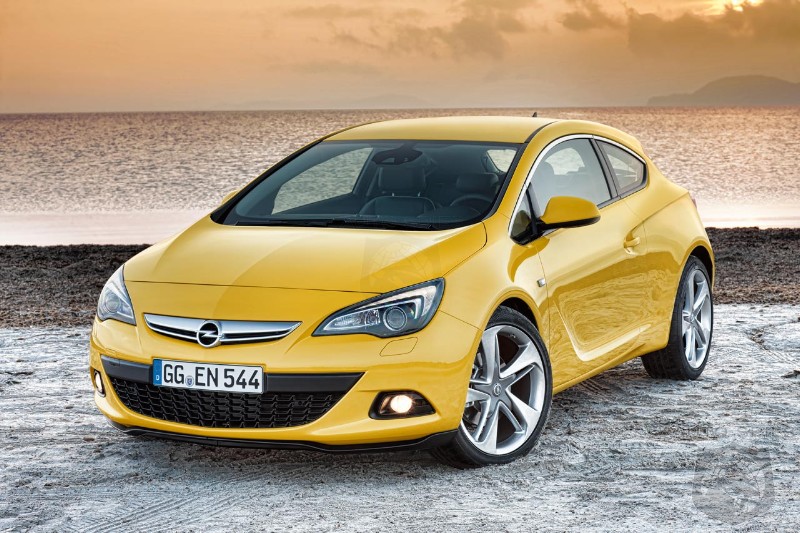 The Opel Astra is a small family car engineered and manufactured by the German automaker Opel since 1991.
The Opel Astra is a small family car engineered and manufactured by the German automaker Opel since 1991.
It is branded as Vauxhall Astra in the United Kingdom, the Buick Excelle XT in China and the Chevrolet Astra/Vectra in Latin America. The Saturn Astra was also built for the American and Canadian market, but sales were discontinued in 2009 due to the discontinuation of GM's Saturn marque. The Holden Astra was also discontinued in Australia in 2009 due to exchange rates making the car uncompetitive, and was replaced by the Holden Cruze. It is planned to return it to the Australian market in 2012 as the Opel Astra.[1] The Chevrolet Vectra (Astra H) was also discontinued in Latin America and was also replaced by the Chevrolet Cruze.
The Astra is now built in China, Germany ,the United Kingdom, Brazil, Poland and Ukraine, as well as being assembled from complete knock down (CKD) kits in other countries.
The Astra nameplate originates from Vauxhall who had manufactured and marketed earlier generations of the Opel Kadett (the Kadett D (1979–1984) and Kadett E (1984–1991)) as Vauxhall Astra. Subsequent GM Europe policy standardised model nomenclature in the early 1990s whereby model names were the same in all markets regardless of whether the vehicle was being sold as an Opel or a Vauxhall.
 As of 2009, there have been four generations of the Astra. In a fashion typical for Opel they are designated with subsequent letters of the Latin alphabet. Opel's official convention is that the Astra is a logical continuation of the Kadett lineage, thus referring to the first generation of Opel Astra as the Astra F(the last Opel Kadett was the Kadett E). Another convention used by GM starts with Astra A, adopting the notion that the Astra is a separate model. Models sold as Vauxhall, Holden or Chevrolet have different generation designations reflecting the history of those nameplates in their home markets and their naming conventions.
As of 2009, there have been four generations of the Astra. In a fashion typical for Opel they are designated with subsequent letters of the Latin alphabet. Opel's official convention is that the Astra is a logical continuation of the Kadett lineage, thus referring to the first generation of Opel Astra as the Astra F(the last Opel Kadett was the Kadett E). Another convention used by GM starts with Astra A, adopting the notion that the Astra is a separate model. Models sold as Vauxhall, Holden or Chevrolet have different generation designations reflecting the history of those nameplates in their home markets and their naming conventions.The Opel Astra F debuted in October 1991. With the Kadett E's successor, Opel adopted the Astra nameplate, which was already used by Vauxhall for the Kadett D and E (see Vauxhall Astra). It was offered as a three or five-door hatchback, a saloon (sedan), and a estate (wagon) known as the Caravan and available with five doors only, bringing Opel's run of three-door wagons to an end at long last. A cabriolet was also offered, designed and built by Bertone in Italy. This car was offered in Central and Eastern Europe, as well as Turkey with the name Astra Classic from 1998 to 2002. The Astra F finished production in 1998.
 The model was launched in Europe and South Africa in 1991. In South Africa it was produced under licence by Delta. However, the Kadett name was retained for the Astra hatchback until 1999. The South African Astra included a variant with a 2.0 L turbocharged engine called the Opel Astra 200t S. The 200t S was a specific name where Delta Motor Corporation wanted to show the specialty of the type, which could beat the M3 in a quarter mile in that time. The 200t S stands for: 200 for the horsepower, t for the turbocharger and S for the six speed transmission which was unique in its class at those ages. Both engine and chassis was produced in limited numbers (250 only) in both sedan and hatchback guise in Opel's Hungarian factory at Szentgotthárd. The engine (C20LET) in the Opel Astra 200t S was sourced from the Opel Calibra and Opel Vectra A 4x4 2.0 16V turbo, 4 wheel drive found on European markets, but local engineers converted the 6 speed, 4 wheeldrive drivetrain (Getrag F28) to front wheel drive only and as such was unique to that market. Sedan, hatchback and station wagon models were offered under the Astra name. Controversially, the Kadett and Astra in South Africa won the title of 'Car of the Year' in two consecutive years (1993 and 1994) even though they were versions of the same car.
The model was launched in Europe and South Africa in 1991. In South Africa it was produced under licence by Delta. However, the Kadett name was retained for the Astra hatchback until 1999. The South African Astra included a variant with a 2.0 L turbocharged engine called the Opel Astra 200t S. The 200t S was a specific name where Delta Motor Corporation wanted to show the specialty of the type, which could beat the M3 in a quarter mile in that time. The 200t S stands for: 200 for the horsepower, t for the turbocharger and S for the six speed transmission which was unique in its class at those ages. Both engine and chassis was produced in limited numbers (250 only) in both sedan and hatchback guise in Opel's Hungarian factory at Szentgotthárd. The engine (C20LET) in the Opel Astra 200t S was sourced from the Opel Calibra and Opel Vectra A 4x4 2.0 16V turbo, 4 wheel drive found on European markets, but local engineers converted the 6 speed, 4 wheeldrive drivetrain (Getrag F28) to front wheel drive only and as such was unique to that market. Sedan, hatchback and station wagon models were offered under the Astra name. Controversially, the Kadett and Astra in South Africa won the title of 'Car of the Year' in two consecutive years (1993 and 1994) even though they were versions of the same car.  South African nomenclature was denoted in centilitres, so the Astra and Kadett ranges featured 140, 160i, 180i and 200i models.
South African nomenclature was denoted in centilitres, so the Astra and Kadett ranges featured 140, 160i, 180i and 200i models.The Opel Astra also became available in Australasia badged as a Holden, first in New Zealand in 1995, and then Australia in 1996. The first models were imported from the UK, but later models were imported from Belgium. The Holden Astra name had previously been used on rebadged Nissan Pulsar models from 1984 to 1989.
Opel Astra's first generation was imported to Brazil. Chevrolet of Brazil sent the 2.0 liter/115 bhp engines to Belgium whence the completed cars took their way to Brazil. In 1996 the Brazilian government increased the import rate, though the car remained very expensive[citation needed]. The second generation was manufactured in Brazil.
 The Opel Astra F consisted of two main revisions and was revised in 1995, with the launch of Opel's new Ecotec engine. For a short period, a submodel which consisted of parts from both revisions was produced. The submodel used all the new Ecotec running gear, but many parts from the previous revision were used in order to use up leftover parts. Other main changes included mildly-altered exterior styling, and availability of new specification models.[citation needed]
The Opel Astra F consisted of two main revisions and was revised in 1995, with the launch of Opel's new Ecotec engine. For a short period, a submodel which consisted of parts from both revisions was produced. The submodel used all the new Ecotec running gear, but many parts from the previous revision were used in order to use up leftover parts. Other main changes included mildly-altered exterior styling, and availability of new specification models.[citation needed]Aside from the South Africa-only Opel Astra 200t S, the lead model was the GSi — a 2.0 L I4 16V petrol injected model with 151 hp (110 kW), available as a 3-door only. It also featured sports bodykit and widened front seats in the interior. However, this was substituted in 1995 and was renamed as SPORT, although only a limited number were produced and the bodykit was removed also and it could be selected with the lower-powered, but more modern 'Ecotec' version, the X20XEV (136 hp, 100 kW) parallel with the C20XE. In Europe from 1994 all Astra models were offered with the 2.0 L 16V ECOTEC X20XEV parallel with the 2.0 L 8V (C20NE) engine, but the 3-door and station wagon models could be selected with the 151 hp (110 kW) C20XE engine. After the Astra F series has been replaced by the new generation Astra G in 1998, the also called "REDTOP" C20XE engine was written off by Opel.




0 komentar:
Posting Komentar